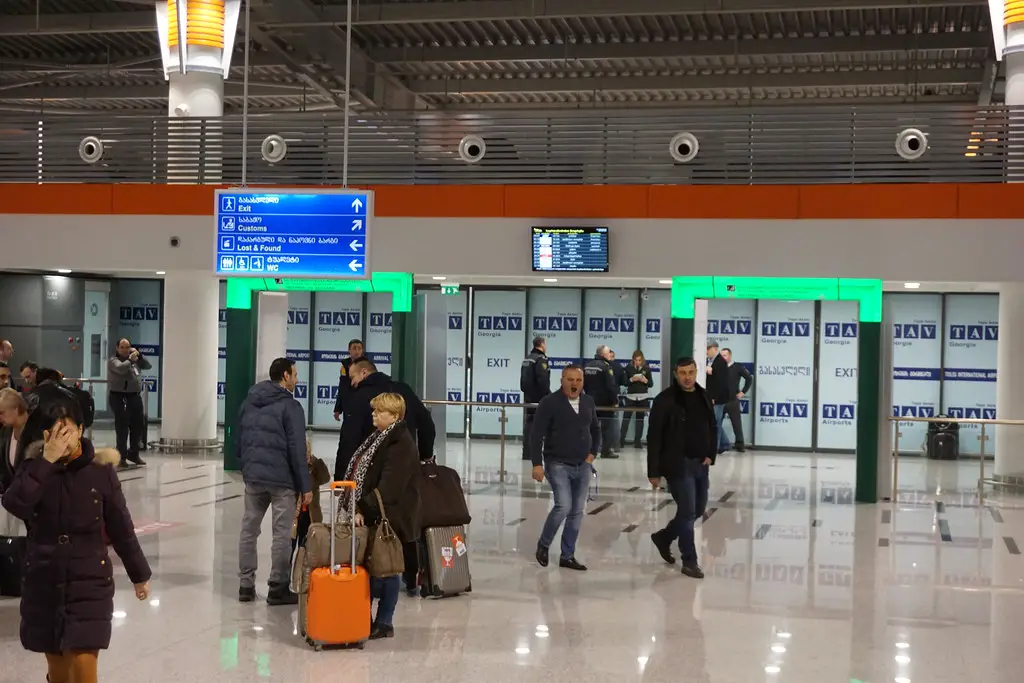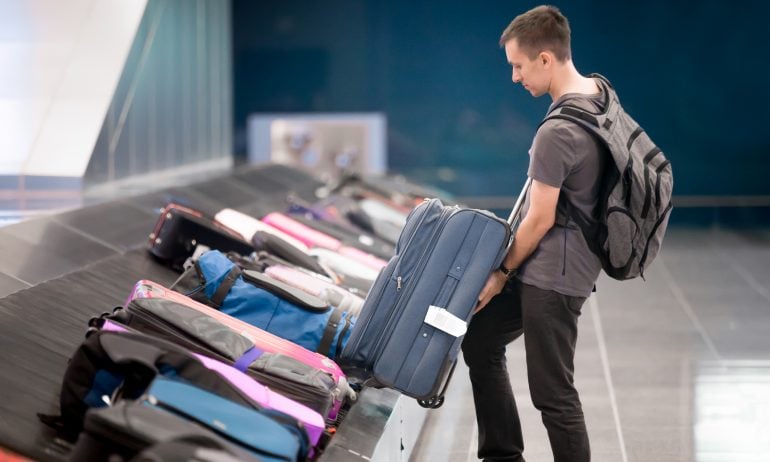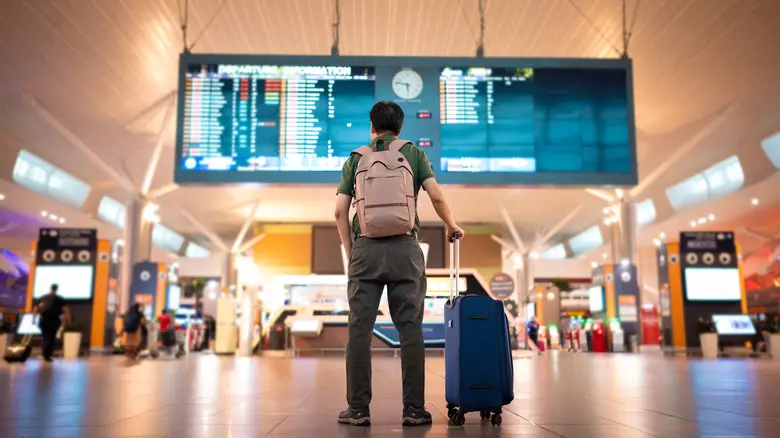How Much Time Before To Reach Airport For Domestic Flight is a crucial consideration for air travelers seeking a seamless journey.
As the heartbeat of any travel plan, arriving at the airport well in advance ensures a stress-free experience and timely departure. Understanding the optimal timing is essential, striking a balance between avoiding last-minute rushes and unnecessary waiting.
Factors such as airport size, security procedures, and potential unforeseen delays play a significant role in determining the ideal window for arrival.
In this exploration of the optimal pre-flight timeframe, we will delve into the key elements that influence the recommended time to reach the airport for a domestic flight, helping travelers navigate their way efficiently through the pre-departure process.
1. Recommended Arrival Time

Industry Standards
Understanding How Much Time Before To Reach Airport For Domestic Flight involves adhering to industry standards for recommended arrival times.
Across the aviation sector, a common guideline suggests arriving at the airport 1 to 2 hours before the scheduled departure for domestic flights.
This timeframe ensures that passengers have sufficient time to complete essential pre-flight processes, such as check-in, security screening, and potential unforeseen delays.
Industry standards consider various factors, including airport size, security protocols, and passenger volume, to strike a balance between avoiding last-minute rushes and minimizing unnecessary waiting periods.
However, it’s crucial to recognize that these are general recommendations, and specific circumstances or individual airline guidelines may necessitate adjustments to the suggested arrival time.
Airline Specific Guidelines
In the realm of How Much Time Before To Reach Airport For Domestic Flight, understanding airline-specific guidelines is paramount.
Airlines often provide their own recommendations for arrival times, taking into account their unique operations, boarding procedures, and any additional requirements they may have.
Passengers are encouraged to consult the official websites of the respective airlines or contact their customer service for precise information.
Some carriers may advise passengers to arrive earlier than the industry standard, especially during peak travel times or at airports with heightened security measures.
Additionally, certain airlines may introduce online check-in options or encourage the use of mobile apps to streamline the process and reduce the time spent at the airport.
By familiarizing themselves with airline-specific guidelines, travelers can tailor their arrival plans accordingly, ensuring a smoother pre-flight experience tailored to the specific requirements of their chosen carrier.
2. Check-In Procedures
Traditional Counter Check-In
Navigating How Much Time Before To Reach Airport For Domestic Flight is intricately linked with understanding the various check-in procedures available to passengers.
Traditional counter check-in remains a widely utilized method for those who prefer a face-to-face interaction with airline staff.
Passengers opting for this method are advised to allocate extra time, typically arriving at the airport well in advance to account for potential queues at the check-in counters.
This option is particularly relevant for those with special requirements, such as oversized baggage, or for travelers who prefer the reassurance of assistance from airline personnel.
While technology has introduced more streamlined alternatives, traditional counter check-in continues to cater to passengers seeking a personalized and hands-on approach to the check-in process.
Online Check-In Options
In the contemporary landscape of How Much Time Before To Reach Airport For Domestic Flight, online check-in options have revolutionized the pre-flight experience.
Airlines provide passengers the convenience of checking in via their official websites or mobile apps, typically 24 hours before the scheduled departure time.
This method allows travelers to select their seats, input necessary information, and receive digital boarding passes, significantly reducing the time spent at the airport.
Online check-in is particularly advantageous for those with carry-on luggage, as it eliminates the need to queue at traditional check-in counters.
Additionally, passengers utilizing online check-in may also benefit from expedited security procedures, further enhancing the overall efficiency of their pre-flight experience.
As technology continues to advance, online check-in options are becoming integral to modern air travel, offering passengers a seamless and time-saving alternative to the more traditional counter check-in process.
3. Baggage Drop

Timing Considerations
In the realm of How Much Time Before To Reach Airport For Domestic Flight, understanding the intricacies of baggage drop becomes essential.
Timing considerations play a crucial role, especially for passengers with checked luggage. Airlines typically establish specific deadlines for baggage drop-off, ensuring sufficient time for the proper handling and loading of bags onto the aircraft.
Travelers are advised to be aware of these deadlines, which may vary between airlines and airports. Arriving at the airport well in advance is paramount to meet these requirements and avoid any potential issues with checked baggage.
Timing considerations also include factoring in potential lines at the baggage drop counters, especially during peak travel periods, to ensure a seamless and stress-free check-in process.
Streamlining the Process
Efficiently navigating the baggage drop process is key to optimizing the time before a domestic flight. To streamline this step, passengers are encouraged to utilize online check-in options, where available, as it often includes the ability to pre-pay for checked baggage and generate baggage tags in advance.
This not only saves time but also reduces the need for manual processing at the airport. Additionally, adhering to airline baggage policies, such as weight limits and size restrictions, helps prevent delays and ensures a smoother baggage drop experience.
By familiarizing themselves with these guidelines and taking advantage of online tools, travelers can enhance the efficiency of the baggage drop process, contributing to an overall seamless journey.
4. Security Screening
Checkpoint Procedures
As part of the comprehensive understanding of How Much Time Before To Reach Airport For Domestic Flight, passengers must be aware of the security screening process.
Security checkpoints are a pivotal stage in the pre-flight journey, where travelers undergo thorough screening to ensure the safety of the flight.
To navigate this step efficiently, passengers are advised to allow sufficient time, especially during peak travel hours.
Familiarity with checkpoint procedures, such as removing shoes, jackets, and electronics from carry-on bags, contributes to a smoother and quicker screening process.
Additionally, complying with the Transportation Security Administration (TSA) guidelines and having identification and boarding passes readily accessible helps streamline the security screening experience.
TSA PreCheck and Expedited Screening
For those seeking a more expedited security screening process, programs like TSA PreCheck offer a valuable solution.
TSA PreCheck allows pre-approved travelers to enjoy expedited screening, bypassing certain traditional security procedures.
Enrolling in such programs can significantly reduce the time spent at security checkpoints, enhancing the overall efficiency of the pre-flight experience.
Travelers interested in expedited screening options should consider applying for TSA PreCheck or similar programs well in advance to ensure their approval and inclusion in these time-saving initiatives.
By incorporating these expedited screening options into their travel plans, passengers can further optimize the time before their domestic flight, contributing to a more relaxed and efficient journey.
5. Boarding

Boarding Timeframes
In the final stages of How Much Time Before To Reach Airport For Domestic Flight, understanding boarding timeframes is crucial for a seamless transition onto the aircraft.
Airlines typically initiate the boarding process approximately 30 to 45 minutes before the scheduled departure time.
Passengers are advised to be present at the gate well in advance of the boarding announcement to ensure a stress-free boarding experience.
Prioritizing punctuality at this stage allows travelers to settle into their seats, stow carry-on items, and facilitate an efficient departure.
It’s important to note that boarding timeframes may vary, and airlines often provide this information on boarding passes or through announcements at the gate.
Being attentive to these details ensures passengers are ready to board when their group or row is called, contributing to an organized and timely departure.
Gate Arrival Recommendations
Understanding when to arrive at the gate is a key component of optimizing the time before a domestic flight. To ensure a smooth boarding process, passengers should arrive at the gate well before the boarding timeframe specified by the airline.
Gate arrival recommendations typically suggest being present at least 30 minutes prior to the boarding time, allowing sufficient time for any additional security checks, pre-boarding procedures, or unexpected announcements.
Being prompt at the gate also provides passengers with the opportunity to address any last-minute concerns or inquiries with airline staff, ensuring a seamless transition from the airport to the aircraft.
6. Contingencies for Delays
Traffic and Transportation
While preparing for How Much Time Before To Reach Airport For Domestic Flight, passengers should consider potential contingencies for delays.
Traffic and transportation issues can significantly impact arrival times at the airport. To mitigate this, travelers are encouraged to account for possible delays by leaving for the airport well in advance of the recommended arrival time.
Utilizing real-time traffic apps or monitoring transportation updates can provide valuable information to adjust travel plans and ensure a timely arrival.
Planning for traffic contingencies helps minimize stress and allows for a more relaxed experience at the airport.
Weather and Unforeseen Circumstances
Weather conditions and unforeseen circumstances can also introduce delays in the travel process. While it’s challenging to predict and control such factors, passengers can stay informed by checking weather forecasts and monitoring any potential disruptions to their travel route.
In the event of adverse weather conditions or unexpected issues, airlines may provide updates or make announcements at the airport.
Allowing for flexibility in travel plans and staying informed about possible contingencies empowers passengers to adapt to changing circumstances, fostering a resilient and well-prepared approach to the How Much Time Before To Reach Airport For Domestic Flight equation.
Related Topics:
Conclusion
Mastering the art of How Much Time Before To Reach Airport For Domestic Flight involves a holistic understanding of the various stages in the pre-flight journey.
From recommended arrival times and check-in procedures to baggage drop, security screening, boarding, and contingencies for delays, each element contributes to the overall efficiency and stress-free experience of air travel.
Striking the right balance between being punctual and allowing for unforeseen circumstances is key. By adhering to industry standards, airline-specific guidelines, and embracing technological advancements, passengers can navigate the airport landscape with confidence.
Ultimately, a well-informed and proactive approach not only ensures a smooth departure but also contributes to a positive and enjoyable travel experience.
As the aviation landscape continues to evolve, staying attuned to the latest trends and incorporating time-saving measures will undoubtedly enhance the journey from check-in to boarding, leaving passengers better prepared for the adventures that await them at their destination.
FAQs
How much time before a domestic flight should I arrive at the airport?
It is generally recommended to arrive at least 1 to 2 hours before the scheduled departure time for domestic flights. This allows ample time for check-in, security screening, and other pre-flight procedures. However, specific guidelines may vary by airline and airport, so it’s advisable to check with your airline for any unique recommendations.
What factors should I consider when determining my arrival time at the airport?
Consider factors such as the size of the airport, potential queues at check-in and security, traffic conditions, and any specific guidelines provided by your airline. Adapting to your departure airport’s unique features ensures a smoother pre-flight experience.
Can I check in online for a domestic flight?
Yes, most airlines offer online check-in options. This allows you to check in, choose your seat, and obtain your boarding pass via the airline’s website or mobile app. Online check-in is a time-saving option that can streamline your airport experience.

1 thought on “How Much Time Before To Reach Airport For Domestic Flight”